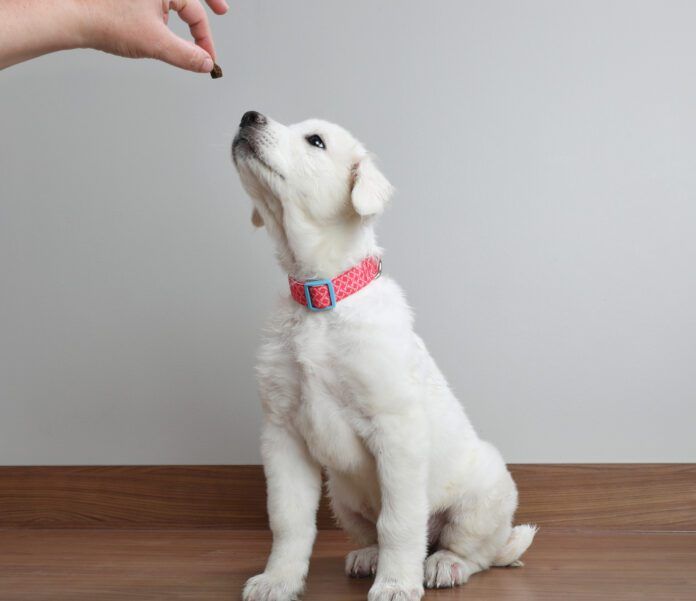
Here’s what you should know when deciding what treat to use as training treats for your puppy:
Smaller is better!
Puppies and dogs are more impressed by the number of treats they get, not by the size of each individual treat. In this case, bigger isn’t better! Using small treats – the size of your pinky finger or even smaller for toy-breed dogs – will allow you to reward often with less chance of your puppy getting full too soon.
Kibble works well in many cases.
If your dog is extremely food motivated (we’re looking at you, Labradors!) you can likely use your puppy’s kibble for training sessions around the house or other areas with low to moderate distractions. Set aside a portion of your dog’s daily ration of kibble to use as treats so you don’t accidentally over-feed by offering full portions in a bowl plus a significant number of extra calories in training. For training in more distracting environments, such as when training your puppy in public, use the higher-value treats described below.
Most of the time, soft treats are ideal.
While kibble often works for dogs who are highly motivated by food – who swallow it down before even realizing it’s in their mouths – most of the time, soft treats are preferred so you don’t lose time waiting for your puppy to crunch through a hard treat. With a puppy’s short attention span, it’s important to keep them engaged in the game.
Options to consider.
There are plenty of commercially available treats on the market. We recommend avoiding many of the brands commonly available in the petfood aisle of grocery stores and heavily advertised on television (no, that’s not really bacon you smell, Fido!), as they are often made from low-quality ingredients.
The key attributes to look for are small, soft, stinky, and easy to digest. I like to use the dog food rolls made by Happy Howie’s, Red Barn, and Lucy Pet Products. They’re packaged like giant salamis and are easily cut into pieces of any size you need. Plus, they’re meaty smelling and in all my years of training dogs, I’ve rarely come across one who isn’t interested in a piece of dog food roll. And, because it’s dog food, it has better nutritional value, which means I’m less concerned about using it often in training.
Another great option is an air-dried dog food like those made by Ziwi Peak and Real Meat. Both offer pre-cut pieces that look like small bites of jerky-style treats usually packaged in long strips.
Think outside the box when choosing treats
It doesn’t have to say “dog treat” on the package to work well in training. There are plenty of other foods to choose from. Some ideas:
- String cheese or other cheese varieties cut into tiny pieces.
- Turkey hot dogs (turkey dogs are less greasy than the beef or pork variety).
- Pre-cooked meatballs are a great, high-value treat for when you need to pull out the “big guns,” and they can be easily pinched into small pieces.
- Cooked meats (chicken breast, assorted cuts of beef, etc.) cut into small pieces.
- Make your own treats – A silicone mat for low-fat baking works great to create hundreds of tiny morsels for training.
Introduce new treats slowly
When trying new treats with a young puppy, introduce one type at a time so you can keep track of how your puppy tolerates the new food item. Some puppies have more robust digestive systems than others. Also, be mindful of the amount of treats you’re using. A young puppy’s digestive reaction to a treat can be just as much about over-indulging as is about not tolerating the specific treat.




